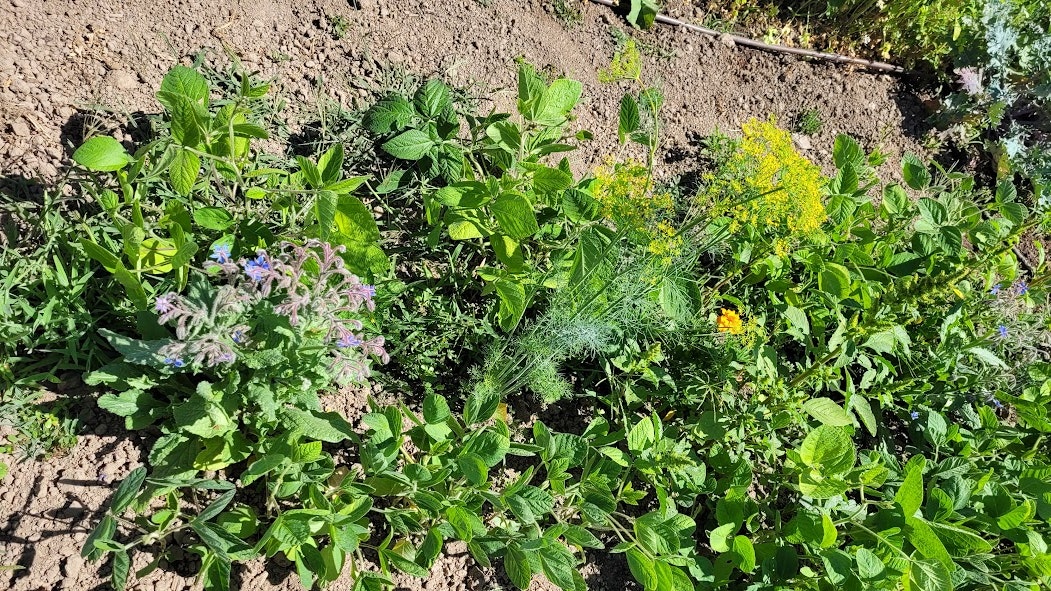Six Habitats for Beneficial Insects
- Field Border Strips of native grasses and wildflowers planted along field edges, farm roads, underneath power lines, or in the corner areas of center-pivot irrigated fields.
- Pollinator Hedgerows of flowering shrubs, trees, perennial wildflowers, and grasses in the understory. Located along property boundaries, fence lines, roads, and as barriers to separate crop fields.
- Streamside Buffers with multi-level native vegetation maintained along streams, creeks, and rivers.
- Beetle Banks - elevated berms that provide shelter and overwintering habitat for predatory ground beetles. Planted next to or through the center of crop fields.
- Cover Crops and Alley Crops - Temporary or permanent plantings of ground cover on fallow crop fields, between rows of berry crops or nursery stock, or in the understory of vineyards and orchards.
- Insectary Strips of pollen and nectar sources planted between crop rows. For more information see Farming with Native Beneficial Insects: Ecological Pest Control Solutions, Xerces Society Guide.

At the Oak Creek Center for Urban Horticulture in Corvallis, pollinator-friendly species are interplanted with food crops to attract beneficial insects.
